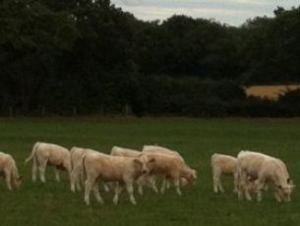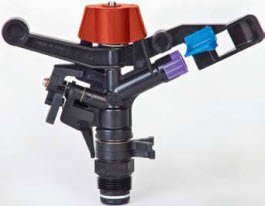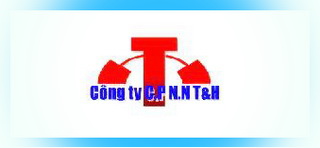News
Grass Management Delivering Benefits for Scottish Farmers

The meetings, in Moffat and Perth, were both packed with farmers keen to hear, not only from recognised grassland experts, but also from farmers who have revolutionised their systems through better pasture management. For those farmers unable to attend the event, the presentations from both meetings can be found on the QMS website.
QMS set up its Grazing Group project three years ago and this is now close to finishing with some impressive results on the farms which took part. Many other farmers who got involved with their local group meetings also made improvements to their grass management systems, allowing them to increase stock numbers and produce more kilos of liveweight per hectare per year.
One example of the farmers who have successfully made changes is Jim Logan, who farms 570ha at Pirntaton, Galashiels. Over the last five years he has gone from a high input/high output pedigree system to a low input/high output commercial system based on grass.
He told delegates: "The objective was to develop a business model and farming system which was profitable and sustainable without reliance on subsidies or the sale of high value pedigree stock.” He did this by committing wholeheartedly to reducing cost of production while increasing output per hectare by making the best use of resources already available on farm i.e. grass.
He said: "My big motivation was the cost of feed; compare grazed grass at 2.5 to 4p per kg against compound feed at anything from 23.5 to 41p/kg."
By adopting rotational grazing across the farm he has increased grass production by up to 30 per cent and improved the utilisation of grass from 50 per cent to 80 per cent. This has allowed him to maintain suckler cow numbers at just over 100 and increase his ewe numbers by 600 to 2000.
Output from the farm is on target to be 460kg of liveweight per hectare compared to 293kg in 2015 and, with a further 300 ewes going to the tup this year, the forecast for 2018 is 520kg. Mr Logan said, "It is important to remember that there are no extra costs for the extra output."
Over the three-year Grazing Group project Jim has taken advantage of expert advice from New Zealand vet and beef and sheep consultant, Trevor Cook, who was also speaking at the meetings.
Mr Cook believes the potential from grass in Scotland is enormous and urged delegates to grab the opportunity to change what they are doing and improve their production systems.
"It is the control and management of pasture which is important and making the most of the grass you have got,” said Mr Cook.
Mr Cook recognises that farmers in Scotland and New Zealand have a common challenge in that they cannot influence market price and have to take what they are given. In light of this, his view is that farmers should focus elements within their control to maximise profit, which for most livestock systems is closely linked to producing as many kilos of beef or lamb as possible from the least amount of feed.
Controlling grass production by grazing requires a lot of monitoring, planning and management, but Mr Cook, along with other speakers, Andre van Barneveld and Michael Blanche agreed it was worthwhile.
Mr van Barneveld, who runs Graise Consultancy in Ireland, urged farmers to "believe in the grass and do not aspire to be average”.
“It can be daunting to go down the grass route but there is no downside. Worst case scenario is that you will be no worse off, best case is that you will make better profits and find farming more enjoyable," he said.
He discussed how to optimise grass production, quality and digestibility through grazing at the correct growth stage and for the correct length of time, which varies throughout the year and according to weather conditions. He said: "On the whole what is good for the grass is good for the livestock."
He also advocated using supplements to correct a pasture deficit and not to directly feed the animal. He said: "Substitution in the form of concentrate is the greatest threat to pasture management. The key to profitability is to maximise meat production from grass and then consider a concentrate or supplement - not the other way round."
Michael Blanche, Knowledge Transfer Specialist with QMS, said that control of grazing is the key to delivering twice the production at half the cost and he urged farmers to keep focused and avoid being put off by a "wobble" during the process of change.
"The farmers who have attended Grazing Group meetings and embraced the concept say they have never enjoyed farming more. They are much less worried about support income and Brexit because they have taken back control."
For those farmers unable to attend the event, the presentations from both meetings can be found on the QMS website.
TheCattleSite News Desk




















